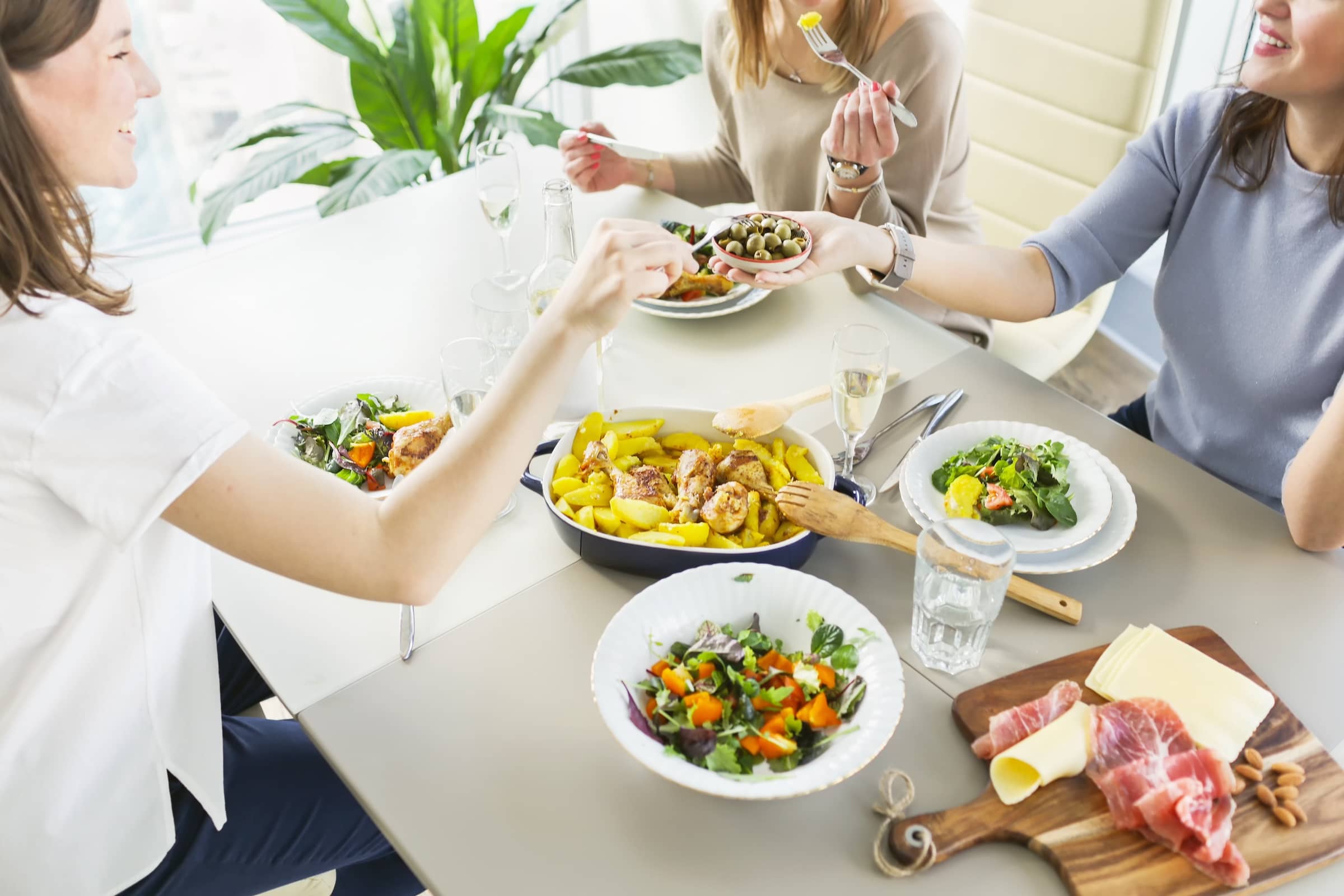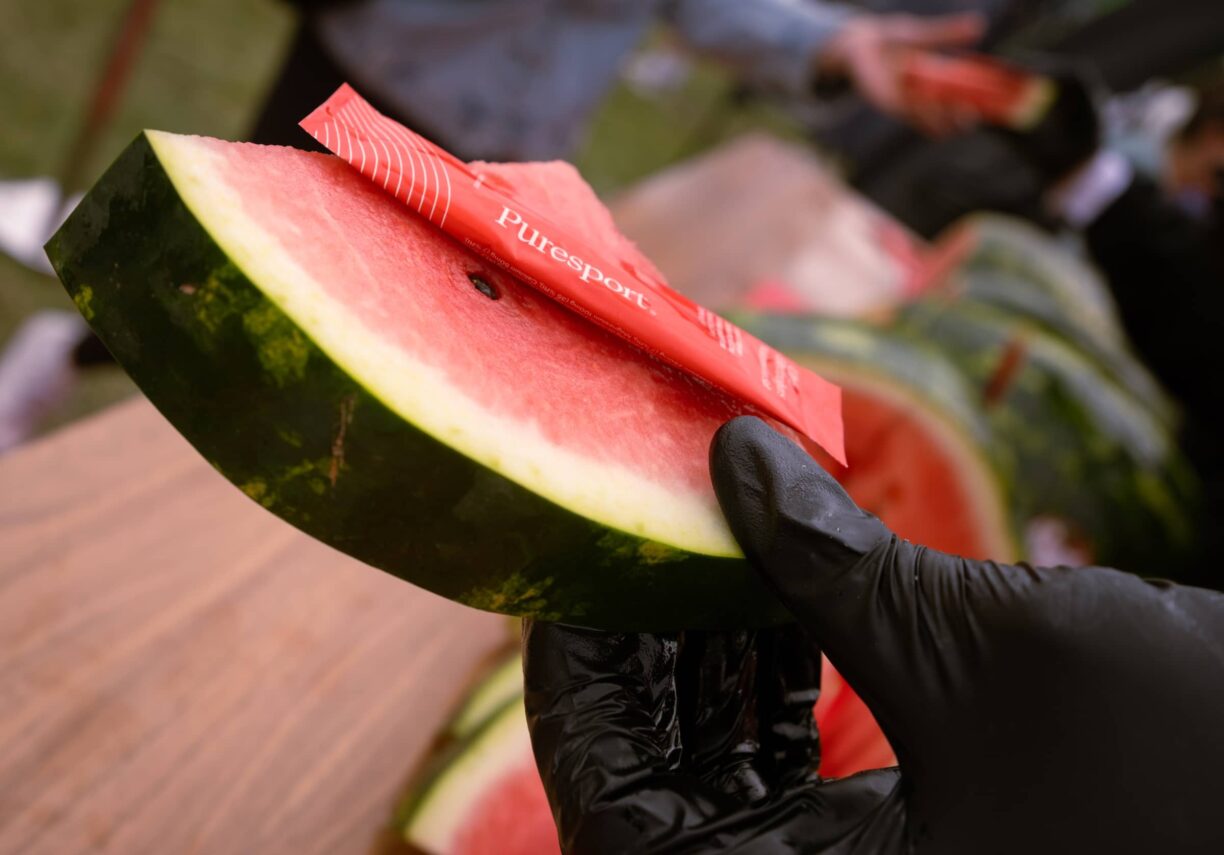Britain may have been built on meat and two veg, but dinners such as beef stews, shepherd’s pies and roasts are falling out of favour, as Brits eat in a more mezze or tapas style.
Classic breakfasts such as the Full English are also under threat, according to the poll, as a third (34 per cent) of Brits now RARELY eat three meals a day – and nine in ten (90 per cent) have replaced bigger meals with smaller, more frequent snacks.
Overall, as many as half (48 per cent) of the 2,000 Brits surveyed by The Laughing Cow, say they are currently following a “little-and-often diet”, tucking into smaller snacks, on average, at least seven times a day.
UK women are more likely to adopt this eating pattern than men – over half (52 per cent) – compared to 43 per cent of the men polled.
The majority (89 per cent) of those surveyed believe the idea of three, rigid mealtimes doesn’t work with modern lifestyles, thanks to people eating when they are hungry rather than at set times (42 per cent), a lack of time (34 per cent) and being too busy to cook (31 per cent).
The research revealed 31 per cent say, working from home means they can eat when they want, and eight in ten say the daily struggle of what to cook has produced meal plan fatigue.
And it may be a healthier approach – as the rise of popularity of intermittent fasting means 89 per cent of Brits say they feel MORE satisfied and energised as a result of eating smaller amounts, more frequently.
Yet as a result, a number of traditional breakfast dishes are falling out of favour, with the Full English (43 per cent) among the breakies which are disappearing from tables across the country – and boiled eggs and soldiers (32 per cent) also on the decline.
You can also forget having a pork pie (33 per cent) or soup and bread (28 per cent) for lunch, as they are off the menu for many modern Brits, along with pasties (15 per cent).
And with one in four (26 per cent) admitting they would rather dip in and out of the fridge than sit down to a hot meal in the evening, so it’s no surprise that many classic dinners are vanishing from dinner tables, including toad-in-the-hole (43 per cent), beef stews (36 per cent), shepherd’s pie (26 per cent) and roast chicken (21 per cent).
Oliver Richmond, from The Laughing Cow said: “This research reveals how our eating habits are shifting, and that snacking and enjoying lighter plates throughout the day is becoming more normal – especially over the summer months.
Snacking can sometimes be associated with unhealthy food choices, but with our Light range, you can snack more mindfully with potion-controlled convenient triangles that are high in taste and 25 calories per portion.”
Nutritionist Juliette Kellow says: ” Eating little and often can help keep our blood sugar levels steadier so we have more energy, are better able to concentrate, and are less likely to feel tired, irritable or angry.
The key is to choose healthy, nutritious ‘mini’ meals and snacks. Great choices include whole grain toast, pitta or crackers with light cheese spread and tomato, salads topped with salmon, prawns, egg, beans or chicken, vegetable omelettes, a bowl of fruit with plain yoghurt and nuts, or a jacket potato filled with tuna, sweetcorn and light cheese spread.
BRITISH BREAKFASTS FALLING BY THE WAYSIDE…
- Kippers – 50% (of Brits never eat this anymore)
- A full English – 43%
- Boiled eggs and soldiers – 32%
- Poached eggs on toast – 24%
- Porridge – 21%
BRITISH LUNCHES FALLING BY THE WAYSIDE…
- Pork pie – 33%
- Soup and bread – 28%
- Filled jacket potato – 20%
- Pasty – 15%
- Sandwich – 15%
BRITISH DINNERS FALLING BY THE WAYSIDE…
- Toad-in-the-hole – 43%
- Beef stew – 36%
- Shepherd’s pie – 26%
- Roast chicken – 21%
- Fish and chips – 13%
Nutritionist Juliette Kellow offers her top tips for eating little and often in a nutritious way:
- Get planning – Plan your mini meals and snacks – and have all the ingredients to hand to make them. If you leave it to chance, you’re more likely to end up grabbing fatty, sugary or salty snacks that are also low in protein, fibre, vitamins, and minerals. Think about when you’re going to eat, too. As with three larger meals, it’s best to spread mini meals and snacks evenly throughout the day.
- Include protein with meals – It can be easy to overlook protein-filled foods when eating smaller meals but it’s vital to put them on your menu as protein is important for maintaining muscle strength. Good choices include beans, lentils, eggs, fish, milk, reduced-fat cheese, yoghurt, chicken, and lean meat.
- Get your 5-a-day – Vegetables and fruit are packed with fibre and heaps of vitamins and minerals so make sure you include them throughout the day. Have at least one portion with each of your mini meals and snacks and don’t worry if you eat more than five portions of fruit and vegetables a day either, a study from Imperial College London[1] found that eating as many as 10 daily portions of vegetables and fruit may be even better than five for keeping us healthy.
- Put dairy on the menu – Dairy products like cheese spread provide calcium, a vital nutrient for bones and teeth. Lower-fat products are a great choice as they contain less fat but retain all the calcium. For example, 1 triangle of The Laughing Cow Light Cheese Spread contains 80mg calcium – 10% of the Daily Reference Intake – and yet 1.2g fat (less than 2% of the maximum daily amount recommended).
- Watch sugar content – Frequently eating sugary foods can damage teeth, increasing the risk of tooth decay, and making it harder to manage weight. So as part of a little-and-often-diet, cut back on sugary foods and swap them for nutritious savoury options like wholemeal toast with unsweetened peanut butter, oatcakes topped with light cheese spread and sliced tomato or hummus with vegetable sticks
- Be prepared for on the move – Busy lifestyles can mean we end up eating a lot of our food away from home so take your own light meals and snacks with you so you know exactly what’s gone into your meals. Handy on the go snacks to take with you include small tubs of nuts, seeds and dried fruit, apples, satsumas, and individual packs of breadsticks.
- Go tech-free when eating – Eat mindfully so you not only enjoy your food but also focus on what you’re eating. It will help you recognise when you’re full and make it easier to remember what and when you last ate, meaning that you’re less likely to overeat. To make meals your focus, sit at a table, use a plate and cutlery, chew every mouthful well, and go tech-free (that means no screens) every time you eat.





